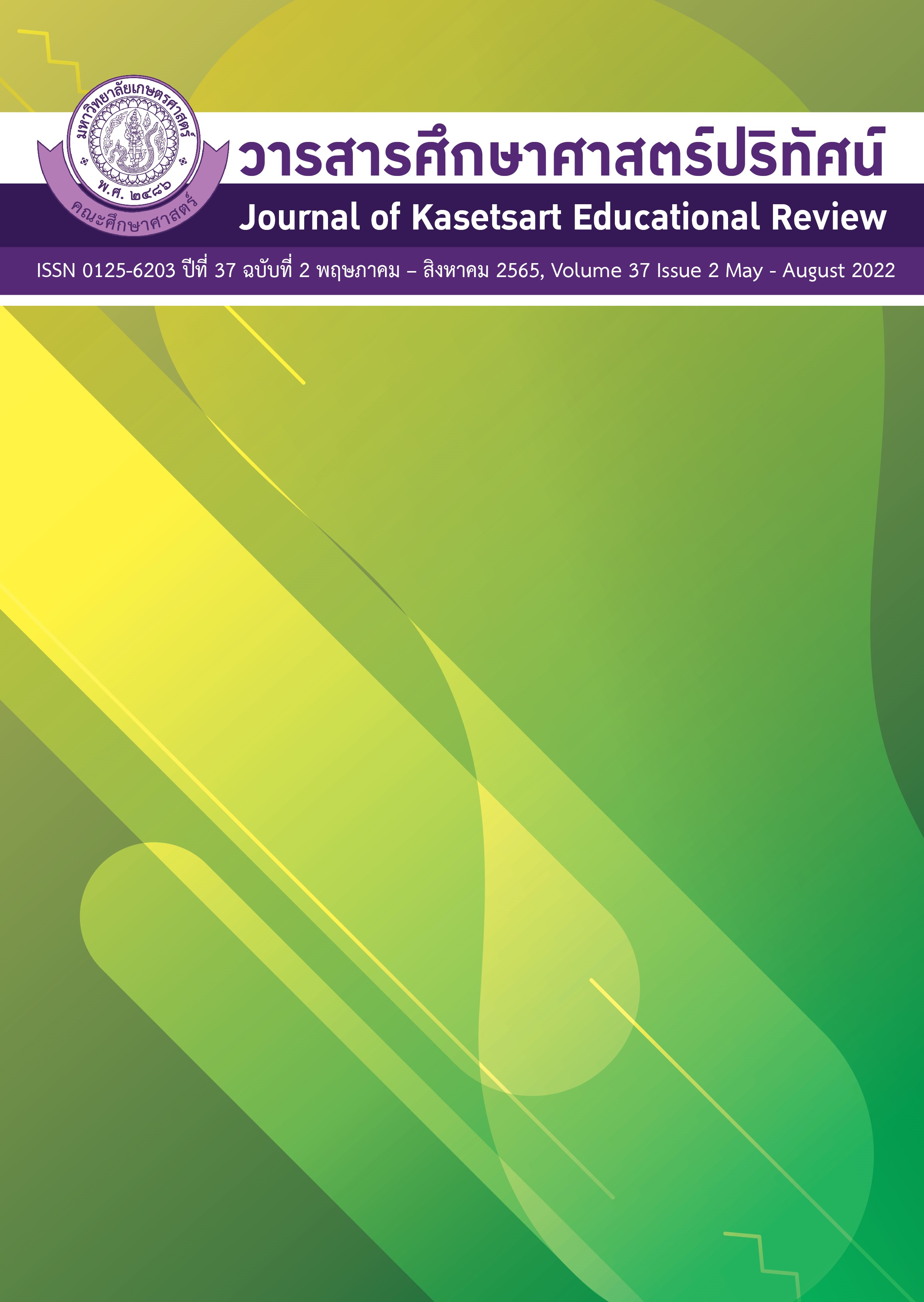จากหนังสือเรียน “Weaving It Together 3” ถึงหนังสือเรียน “New Weaving It Together 3” มีอะไรปรับเปลี่ยน
คำสำคัญ:
การปรับเปลี่ยนหนังสือเรียน, การวิเคราะห์ลักษณะหนังสือเรียน, ทางเลือกที่หลากหลายเกี่ยวกับการปรับเปลี่ยนหนังสือเรียนบทคัดย่อ
หนังสือเรียน “Weaving It Together 3 (WIT 3)” ที่ผ่านมาได้นำมาใช้แล้ว หนังสือเรียน “WIT 3” ในครั้งก่อนไม่ทันสมัยและไม่ท้าทายนักเรียนด้วยการคิดอย่างมีวิจารณญาณ หนังสือเรียนไม่เอื้ออำนวยความสะดวกและไม่เข้าถึงนักเรียน และคำศัพท์สำคัญในหนังสือเรียนไม่ได้นำกลับมาทบทวนใหม่ รูปภาพในหนังสือเรียน “WIT 3” ไม่มีชีวิตชีวา ไม่มีสีสัน และไม่เหมือนจริง ต่อมาในปัจจุบันหนังสือเรียน “New Weaving It Together 3 (New WIT 3)” ได้ตอบสนองนักเรียนในด้านการเตรียมความพร้อม แรงจูงใจ ความรู้ และทักษะการอ่านเขียน หนังสือเรียน “New WIT 3” มีความทันสมัยด้วยรูปแบบที่แน่นอนซึ่งสามารถขยายความรู้ของนักเรียนในเรื่องหลักของหน่วยการเรียนรู้ได้ เครื่องมือของ บิค (2548) ได้นำมาใช้วิเคราะห์และตีความเพื่อหาลักษณะหนังสือเรียน “WIT 3” และหนังสือเรียน “New WIT 3” จากหนังสือเรียน “WIT 3” ไปจนถึงหนังสือเรียน “New WIT 3” เครื่องมือของเกรฟส์ (2543) อีกเครื่องมือหนึ่งได้นำมาใช้วิเคราะห์การปรับเปลี่ยนหนังสือเรียน “WIT 3” ไปเป็นหนังสือเรียน “New WIT 3” ในระดับกิจกรรม ในระดับหน่วยการเรียนรู้ และในระดับประมวลรายวิชา
เอกสารอ้างอิง
Bik, K. (2005). An analysis of the English Textbook, ‘Different student book 2’ by Jim Lawley and Rodrigo Fernand Carmona. Unpublished Master’s research paper, Thammasat University, Language Institute, Teaching English as a Foreign Language.
Blanton, L. L. (1992). Reading, writing, and authority: Issues in development ESL. College ESL, 2(1) 11-19.
Broukal, M. (2009). Weaving it together 3. Bangkok: Thai Watana Panich Co. Ltd.
Broukal, M. (2016). New Weaving it together 3. Bangkok: Thai Watana Panich Co. Ltd.
Graves, K. (2000). Designing language courses: A guide for teachers. Boston, MA: Heinle & Heinle.
Halim, S. & Halim, T. (2016). Adapting materials: Revisiting the needs of learners. International Journal of Humanities And Cultural Studies Issn 2356-5926, 2(4), 633-642.
Harmer, J. (1992). The practice of English Language Teaching (3rd impression). England: Longman.
Hutchinson, T. & Waters, A. (1995). English for specific purposes: A learning-centred approach (10th impression). Cambridge: Cambridge University Press.
Kroll, B. (1993). Teaching writing is teaching reading: Training the new teacher of ESL composition. In Reading in the Composition Classroom. Boston: Heinle & Heinle Publishers, 61-81.
Marand, E. S. (2011). Adoption, adaptation, and development of language instructional units. European Journal of Social Sciences, 22(4), 550-555.
Meesupsang, P. (2009). An analysis of the English textbook, Smart choice 2, student book. Unpublished Master’s research paper, Thammasat University, Language Institute, Teaching English as a Foreign Language.
Michel, Y. K. (2018). EFL Materials- from adoption to adaptation: Definitional, practical and operational aspects of textbook development by teachers. International Journal of English and Education, 7(4), 260-274.
Tonawanik, P. & Donavanik, N. (2019). Teaching materials: Adopting and adapting. Journal of Suvarnabhumi Institute of Technology (Humanities and Social Sciences), 5(2), 635-648.
Youngsathian, P. (2017). New weaving it together 3 teacher’s guide. Bangkok: Thai Watana Panich Co. Ltd.
ดาวน์โหลด
เผยแพร่แล้ว
ฉบับ
ประเภทบทความ
สัญญาอนุญาต
ลิขสิทธิ์ (c) 2022 วารสารศึกษาศาสตร์ปริทัศน์

อนุญาตภายใต้เงื่อนไข Creative Commons Attribution-NonCommercial-NoDerivatives 4.0 International License.
บทความทุกบทความเป็นลิขสิทธิ์ของวารสารคณะศึกษาศาสตร์ มหาวิทยาลัยเกษตรศาสตร์ วิทยาเขตบางเขน
วารสารศึกษาศาสตร์ปริทัศน์ (Kasetsart Educational Review)






